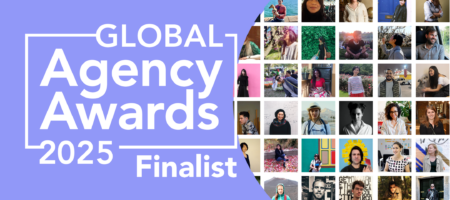A scandal of design
Services can go terribly wrong. There was a reported tragedy in 2018 when the Chinese taxi app, DiDi, designed its shared riding service to encourage social connections between passengers and taxi drivers. This led to several serious crimes against females (including two murders), sexual assaults and sexual harassments during the rides. After examination, certain design features in the app – for example, allowing users to tag passengers with descriptions like ‘‘adorable’ and ‘long legs’ – were criticised as design flaws that encouraged sexual harassment during the ride.
This national scandal in my native China might be exceptionally awful, but as a service designer, it haunts me that every design decision we take could have significant consequences in people’s lives. Unfortunately, there are so many stories like this in the world. In Lou Downe’s new book, Good Services: How to Design Services that Work, numerous examples of financial services in the US are called out for having caused their users suffering as a result of things like identity fraud. Bad services aren’t just failing to work optimally; in so many cases they are causing devastating damage, having a severely negative impact on mental health and even endangering lives.
How can we put more care into services?
This question shouldn’t be limited to service design in areas like healthcare or social services, which deliver care as a core promise. It should also be a necessary concern when we’re designing commercial services – from shopping and traveling, to banking and working.
I really believe that we have a duty to build care into services as a default. In other design disciplines, it happens quite organically. When designing for elderly users, for example, it’s common to see bigger fonts in graphic design, and handrails and ramps to aid mobility in interior design. These default design decisions have become the norm. But in service design, what are the equivalents of handrails or large fonts? How should I, as a service design practitioner, consider care more dutifully in my work?
Inspired by these questions, I decided to use desktop research and conversation with experts to explore the answers. My thanks goes to the people who kindly shared their thoughts and inspired me with their ideas. These experts are Lingjing Yin, the design director at FutureGov; J Paul Neeley, a service & speculative designer who has shaped services in the Mayo Clinic and Policy Lab; and Joanna Brassett, the founding director at intO, who has years of experience delivering child and family care research around the globe.
Here, we want to share a few of the initial thoughts that we generated about how to design care into services.
1. Avoid harm
Harm in services can exhibit in many different ways: physically, financially, mentally, and so on. Firstly, there are some ethical frameworks from different domains that service designers may consider. For example, Lingjing shared some of her experience on considering design decisions for data & privacy. To avoid the potential leak of data, which may result in privacy implications, Lingjing said that some of her work has deliberately chosen to collect as little data as possible.
Mental health and financial harm, as two examples, might be more tricky to substantiate and avoid than data. But to mitigate the potential for harm, it’s essential to understand the end user. In a research project that intO completed for the Wellcome Trust, last year, we conducted ethnographic interviews and fieldwork with occupational health professionals, academics and front-line workers. The Wellcome Trust’s objective was to understand how academic research might better reach those people in society that could benefit most from the findings. intO was recruited to help understand the mental health risks and implications for night-shift workers. Through this multi-disciplinary collaboration, designers and decision makers started to come up with interventions to avoid harming the mental health and wellbeing of workers.
At RCA, a student of mine also recently replicated this approach by inviting wider stakeholder groups to join a design process that sought to reduce negative implications for mental health amongst users of banking services. Conducting research alongside experts seems to be an essential first step for service designers who wish to avoid harm and build care into services.
2. Communicate better
Good communication is another building block for designing care in services. In Lou Downe’s new book, Good Services: How to Design Services that Work, Downe illustrates how helpline services are often very badly designed. Commonly, staff manning helplines are given a key performance indicator that incentivises speed. The ambition of ‘solving customer problems within seven minutes might be noble. But when more than seven minutes is required to achieve a good result for the customer, and yet calls are hurriedly cut short by the customer service representatives, this KPI actually works against it’s initial purpose.
As a comparison, Dr. Nick de Leon from RCA’s School of Design / Service Design always talked about the magic of traditional hospitality service. In this sector, staff members are very communicative and not only ask customers ‘How is everything?’ regularly, but also manage to pre-empt many requirements and needs before the customer has even thought of them, themselves. This shows a sense of care and often proactively illuminates previously un-discovered opportunities for service improvement.
During my own studies at RCA, I was very inspired by two examples taught there. In the early 2010s, the Design Council in the UK published a design challenge that was focused on how to reduce violence and aggression in A&E departments (Accident & Emergency Service). PearsonLloyd, a design agency in London, proposed a design solution that aimed to improve the A&E experience by reducing stress via well-communicated information boards that were installed in the spaces. By giving clear guidance to the users (e.g. patients, family members, etc), this better communication allowed them to experience ‘care’ under stressful conditions.
In designing GOV.UK, its co-founder, Ben Terret, famously argued for a clear and functional communication design (e.g. font choice, copywriting, layout, etc) for delivering government services. To summarise the importance of good communication in designing care into services, there is an inspiring quote from Dutch ethnographer, Annemarie Mol, in her book The Logic of Care:
‘Good communication is a crucial precondition for good care. It also is care in and of itself. It improves people’s daily lives.’ (Mol, 2008, P76)
3. Build accessibility and inclusivity
Accessibility and inclusivity also seem to be key components when designing care in services. This notion shares a similar consideration with many other design disciplines, such as inclusive design. One way to tackle accessibility and inclusivity is to actively seek extreme users on the user group spectrum. By actively working with users with special needs, this approach allows the design to be used by much wider user groups and in many more scenarios. During a past project that intO completed for an air travel client in China, we deliberately sampled extreme user groups, from parents traveling with babies to elderly people, so that we could understand pain points across their user-journeys. We sought to find out what concerned them and caused anxiety, and whether things occurred that prevented them from fulfilling their missions along the journey, or disabled their agency. What are the things that concern them, prevent them from fulfilling their mission , or disable them to exercise their agency? Decision makers and designers have a co-responsibility to create inclusive and accessible services for their users.
4. Investigate the perception of care
The perception of care is personal and cultural. To design care into global services, we must understand the cultural differences that influence the perception of care. In the past few years, Studio intO’s founding director, Joanna Brasset, has led our team of Local Experts as they’ve worked with families in numerous, diverse markets to help our childcare-focused clients to design better products. We’ve learnt from these experiences that the perception of care is varied among different national cultures (for example, China versus the USA) and generational cultures (for example, people in their 60s versus people in their 90s). Each interaction and experience can be perceived differently in different cultures. In a three-generation Chinese family, each family member may take a very different approach towards providing childcare, ranging from a weekend-fun-maker to a weekdays-heavy-duty-carrier. This knowledge influences how care is designed and facilitated through the designed artefacts. To borrow this learning and apply it to service design, we similarly need to understand the dynamics of stakeholders in services, as well as their perception of care. What are the roles that each individual plays? How do they perceive ‘care’ in their own context? Considering stakeholders and the perception of care in this way enables us to design the right care for the right people.
5. Consider the systemic impact
Human-centred / user-centred as a design principle has become increasingly mainstream. Designers and decision makers seek to attract and influence customer purchase decisions by promising the fulfilment of needs. However, it’s well understood that, by centring too much on users, there’s a risk that not enough credence is given to the wider impact of the design on the ecological, cultural and social context.
In 2019, the launch of sharing scooters and bicycles (in the USA and China, amongst other cities) were good examples of design fulfilling individual users’ needs surrounding last-mile travel mobility – while failing to consider how large quantities of scooters and bicycles could be parked (or even stacked) on pedestrian footways. This was careless design. The impact on urban spaces and ecological environments was much wider and more damaging than the positive contribution made by the solution. When I asked J Paul Neeley about his thoughts on building care into services, and his experiences working in healthcare and social policy design, he kindly shared some of his perspectives from his up-coming book, New Kind of Design. Neeley passionately argues for designers and decision makers to consider the wider systemic impact and implications that can be caused by design actions – beyond the singular focus on individual human needs. I particularly like one of his manifestos:
‘Nothing can ever be isolated from anything, because it’s always connected to everything’.
To me, this highlights the connection between us, as individuals, to the ecological and social conditions that we live in today. We need to put our design actions into systemic contexts. This is the care that we need to take, beyond our own individual needs, as service design professionals.
Any thoughts? Let me know!
What are the other components you would consider when designing care into everyday services? What research questions would you like to ask to ensure the experience of care? Find me on LinkedIn if you’d like to evolve this thinking and discussion about care and service design.

Jonny is the Business Director at intO. With a background in service design, he has developed his craft and expertise in design research for innovation and business transformation, and is passionate about delivering transformative effects for clients and their customers. His work features a combination of holistic user-experiences and competitive advantages to shape business innovation.
Posted on July 31st, 2020
Consumption Business Publications Innovation Social Change




